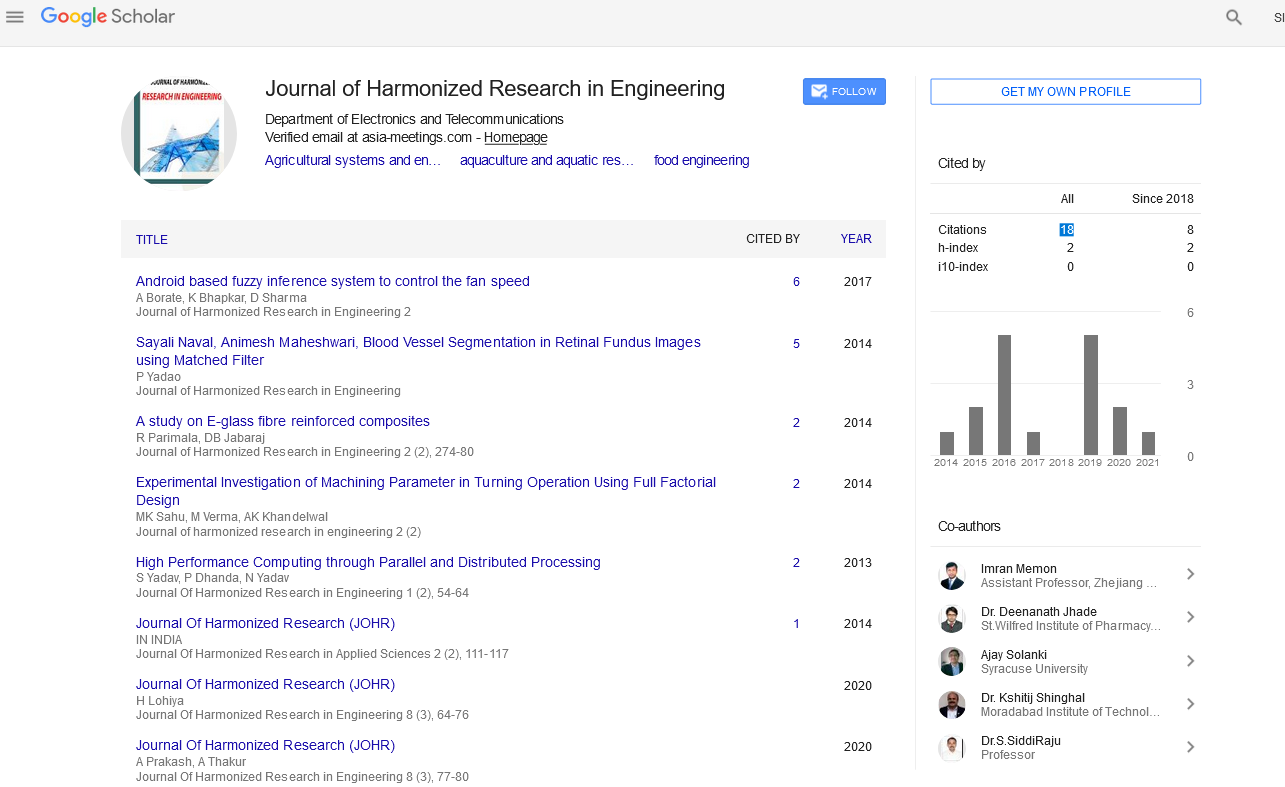Experimental Investigation on Tool Wear, Surface Roughness and Material Removal Rate during Dry Turning of AISI 52100 Steel
Abstract
Author(s): S.R. Das, , R.K. Behera, , A. Kumar and D. Dhupal
OFDM (Orthogonal Frequency Division Multiplexing) technique has been widely adopted in many wireless communication systems due to its high data-rate transmission ability and robustness to the multipath fading channel. OFDM may be united with antenna arrays at the transmitter and receiver side to enhance the diversity gain and to improve the system competence on time-variant and frequency-selective channels, resulting in a multiple-input multiple-output (MIMO) composition. Multiple-input and single-output (MISO) is a case when the transmitter has multiple antennas and the receiver has a single antenna. Sometimes MISO technology is also called as transmit diversity technology. In this case, the same data is transmitted simultaneously from the two transmitter antennas. The receiver is then able to receive the optimum signal which it can then use to obtain and extract the required data. In this paper a comprehensive analysis of multi antenna MISOOFDM systems based on the Bit Error Rate performance in Rayleigh and Rician channels is discussed and analyzed. Similarly, Single Input Multiple Output (SIMO) is a form of smart antenna technology for wireless communications in which a single antenna at the transmitter and multiple antennas are used at the destination (receiver). An early form of SIMO, known as diversity reception, has been used by the military, commercial, amateur, and short wave radio operators at frequencies below 30 MHz since the First World War. The other forms of smart antenna technology include Single input Single output (SISO), Multiple Input Multiple Output (MIMO) and Multiple Input Single Output (MISO). A comprehensive literature survey on the performance analysis of different combining techniques in Rayleigh fading channels for multi antenna SIMO is also analyzed in this paper.

Google Scholar citation report
Citations : 43
Journal of Harmonized Research in Engineering received 43 citations as per google scholar report









